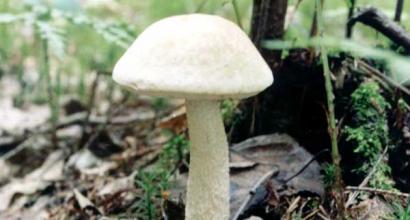Siderati on the city. How to plant, if ever
And the ob'ovyazkova wash is their stagnation for the city dwellers, who conduct natural farming. Only the stinks will be able to achieve the desired structure of the soil after deep digging of their plots.
The fragments of their root system of green manure create a fluffy soil, leaving it wind-permeable and water-intensive on a richly buried ball, leveled and dug up.
Another and no less important is its positive brightness, which is the vigor of the green mass of these plants, which is good, which positively contributes to the development of dry soil.
And the remaining positive power of green manures, with their phytosanitary functions. The stench of the building will suffocate most of the weeds, fight against a lot of pests and pathogenic bacteria and fungi.
At the same time, plants such as white mustard, oil radish and phacelia horobolifolia have gained particular popularity as green manure. That’s why I’m complaining about them myself, and I often stagnate them myself.
There are stinks behind one technology that prevents planting a lawn. The soil on the plot or the beds that are growing and green manure may be cleaned from weeds, slightly dissolved and verified.
Sowing can be done in rows, but more often it can be sown with a strong spray. The norms for sowing per acre are as follows: mustard (300-350g), radish (200-300g), phacelia (150-200g).
For a more even sowing, if necessary, the sowing can be mixed with sand or a fine powder in equal proportions.
After sowing, the soil is laid in a small area using vicor and a simple rake.
Then the plot should be rolled to ensure evenness of the descents.
Absolutely do not want to cover the plot until the gatherings appear with non-woven material, or if you want to use spruce branches, using the method of protecting from the birds (I am working steadily, after the fact that, in my eyes, the growth of horobtsiv has lost most of the sown and mustard, after which they had to be re-sown).
Now let's take a closer look at the features of over-inflated green manure products.
Phacelia gorobolifolia is from the waterfolia family.

A wonderful successor for any urban cultures. You can sow both after early crops and before winter, for example, for spring growth.
One of the invaluable advantages is the ability of the phacelia to be changed from acidic to neutral, thereby leaving the plots like bourgeois and woodchicken.
Cut green mass is turned into mulch, quickly rotting, transforming, compost rich in living elements.
Phacelia fights pests such as nematodes, darts, and also prevents diseases of many vegetable crops from various viral and fungal diseases. With this method, they are often planted between rows or adjacent to the main crops. Like a wonderful honey plant, at the time of flowering it adds bjil and jmel to the plot, thus taming the fruits.
Butter radish is a single plant of the Chrestotsvetih family.

Although this growth is given to the other two instead of nitrogen and other living streams, then it is less vibrant to the ground and suitable for growth on important clayey soils.
And the seizures of their own attic system systems, the penetration on the glybin up to 2 meters, is not a building that is not the structure of the structure of the ґrunta, ale ib on the top of the guts of the iconcoroschinni Eleemeni і re -rhizyuvati for easily Svsovyvani.
Thanks to essential oils, which are found in all parts of the plant, they are also a great phytosanitary. You will be able to fight such diseases as pustule, rhizoctociosis, etc.
This is mainly after collecting early vegetables, or perhaps later sowings, which will result in soil-drying and phytosanitary effects, and from what is good in the least world, through those that are green or you may not reach maturity in the necessary duties before the frosts.
It is better to leave the green masa on the surface all winter, and put it in the soil in the spring, so it will quickly turn into.
Mustard white is a similar species of the Chrestotsveti family.

In terms of its power, green manure is similar to oil radish, but it is not surprising that it has a more powerful mind to the point of greater speed, which makes it possible to harvest it 1-2 years later. Also rich in radish, it contains nitrogen, potassium, phosphorus and other living substances.
The extensive root system, which penetrates to a depth of 2-3 meters, allows for miraculous drainage and structure of the soil. Phytosanitary mustard fruits are not compromised, but should be topped up.
The only few cross-flowers are those that cannot be the predecessors of crops of the same family, such as cabbage, radishes, etc.
Once you have become familiar with the characteristics of these three green manures, you can proceed with an unpretentious decision on where to stagnate them. It is understandable that if you have not yet cultivated an important loamy plot, then it is better to sow radishes, and if, for example, the soil is acidified, then phacelia. If it is necessary to fertilize and structure the soil after early potatoes, it is better to plant mustard.
It’s no less important that you need to approach each skin condition individually and know exactly what and if you’re going to do the same thing after siderates.


